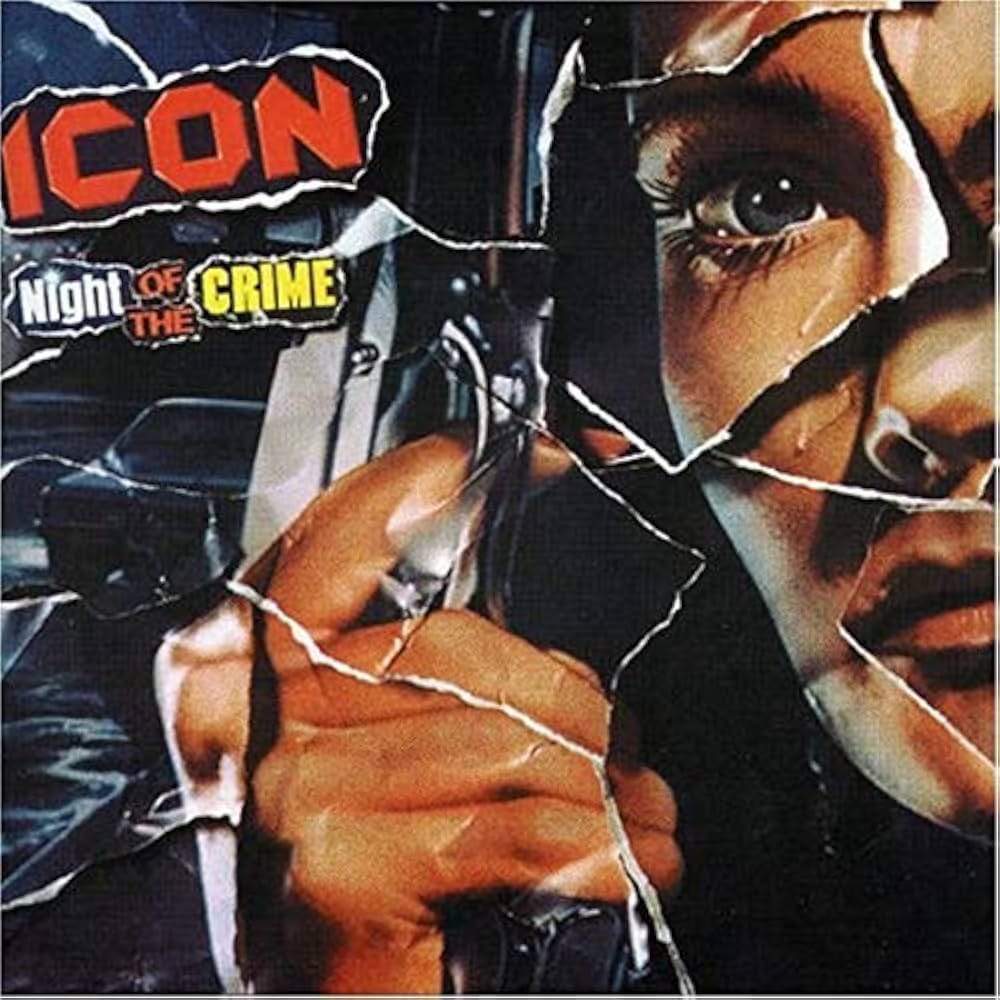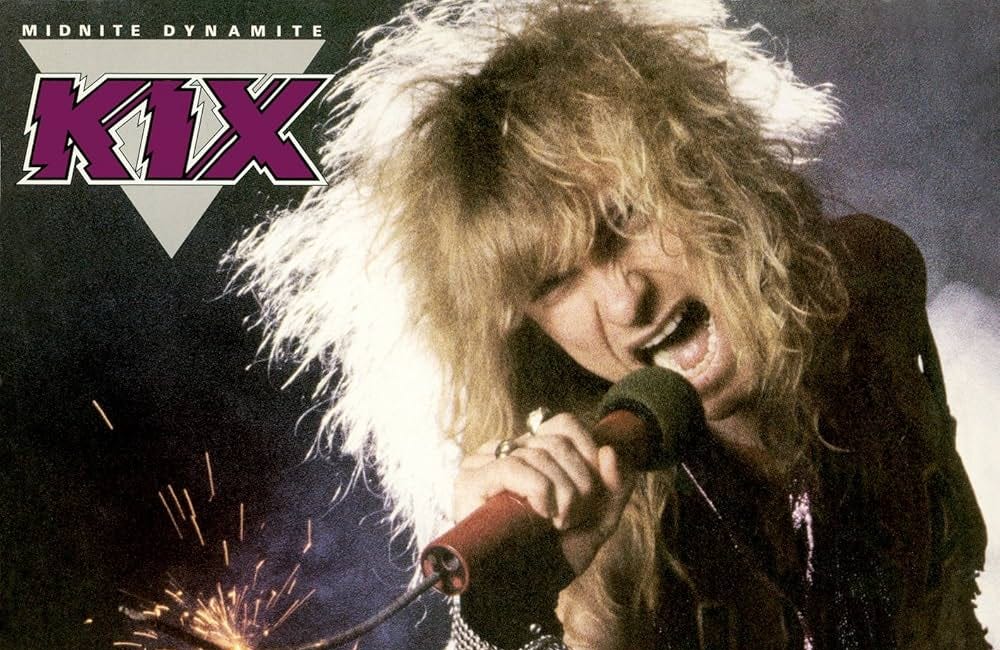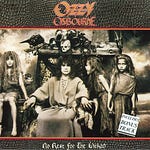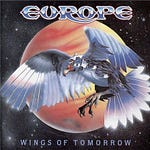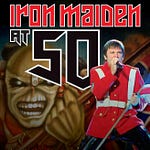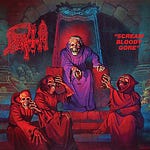Icon’s Night of the Crime won our listener poll after a wild series of tie-breakers against Ozzy Osbourne’s No Rest for the Wicked. That’s what happens when you put the power in the Metal Union’s hands!
Want to see your favorite overlooked album in the spotlight? Suggest the next cult classic for our poll! 🗳️
Ever come across an album that feels like it was built for stardom but somehow got lost in the shuffle?
That’s Icon’s Night of the Crime in a nutshell. Released in September 1985—nearly 40 years ago—this Phoenix-born record sits at the intersection of what could have been and what actually happened, representing one of the most perfectly crafted misses in ’80s metal history.
Picture Eddie Kramer behind the boards, the man who captured the magic of Jimi Hendrix, Led Zeppelin, and Kiss. Ron Nevison mixing—the same guy who would later work his sonic sorcery on Def Leppard. Bob Halligan Jr. co-writing songs, fresh off penning hits for Judas Priest and Kiss. On paper, this was a team assembled to create radio gold.
What they delivered instead was something more intriguing: an album that Kerrang! magazine readers voted the third-best AOR album of all time, yet barely anyone outside hardcore collectors has heard of it.
The story starts with Stephen Clifford’s voice—a powerhouse instrument capable of hitting impossible octaves while maintaining the grit necessary for credible metal. Paired with dual guitarists Dan Wexler and John Aquilino, Icon had the sonic weaponry to compete with anyone in 1985. But here’s where the tale takes its tragic turn.
The Disappearing Act
Just as Capitol Records was preparing to promote Night of the Crime, Clifford walked away. Not during a video shoot, as metal magazines would later report, but during the mastering process. One day he was there; the next, he’d decided music wasn’t his path anymore.
Imagine being Capitol Records in late 1985. You’ve got this polished gem of an album, complete with Eddie Kramer’s signature production sheen, but your lead singer has vanished into the desert. No videos get made. No tours happen. The record gets a token release and dies on arrival.
This wasn’t just bad timing—it was catastrophically bad timing. 1985 was the perfect window for a band like Icon. Def Leppard’s Hysteria wouldn’t arrive until 1987, leaving a gap that bands like Icon could have filled. Instead, Night of the Crime became a “what if” story, trading places in alternate history with albums that actually moved the needle.
Sophisticated Metal
What makes this story more tragic is how good the music actually is. Bob Halligan Jr.—the man behind Judas Priest’s “(Take These) Chains” and Kix’s “Don’t Close Your Eyes”—brought his song-doctoring skills to six tracks on the album. It was sophisticated metal that used dynamics, melodies and time signatures in ways most bands wouldn’t attempt.
Take “Naked Eyes,” where the band cuts to half-time during the verses, giving Clifford space to showcase his vocal acrobatics while creating tension that pays off in the full-throttle choruses. Or “Out for Blood,” which uses strategically placed pauses and tempo shifts to build emotional intensity. These were carefully constructed pieces of musical theater.
The dual guitar work deserves special mention. While many bands used two guitars for simple power chord doubling, Wexler and Aquilino created genuine guitar conversations—one instrument answering another, harmonies that felt earned rather than obvious. It’s the kind of interplay that separated quality AOR from the pack.
Geography as Destiny
Being based in Phoenix didn’t help Icon’s cause. This wasn’t Los Angeles, where record executives made daily rounds of the Sunset Strip. This wasn’t New York, where industry connections grew like weeds. Phoenix in 1985 was a metal outpost—close enough to California to dream, far enough away to remain isolated.
The local scene that existed was small but passionate. Venues like the Mason Jar provided stages for original music when most bars demanded three sets of covers. But when your singer disappears and your label loses interest, being 400 miles from the nearest industry hub becomes a serious liability.
Compare this to bands like Tesla, who overcame geographical disadvantages through relentless touring and networking. Icon never got that chance—their window closed before they could even try.
The Album That Time Forgot
Night of the Crime exists in that frustrating space between underground cult classic and mainstream success. It’s too polished and radio-ready to be genuinely underground, yet too unknown to claim mainstream recognition. Metal journalists who discover it inevitably use words like “hidden gem” and “underrated classic”.
The production holds up remarkably well. Eddie Kramer’s touch is evident in every song—that perfect balance between raw power and commercial sheen that made his work with Kiss so effective. The mix gives each instrument its own space while maintaining the wall-of-sound impact necessary for arena rock dreams.
Lyrically, the album operates in classic AOR territory—relationships, power, desire—but avoids the worst clichés of the genre. Songs like “Missing” construct coherent narratives rather than just stringing together rock and roll buzzwords.
What Could Have Been
The tragic irony is that Icon was ahead of their time in some ways, perfectly timed in others. The sophisticated songcraft and production values that make Night of the Crime special in 2025 were exactly what radio programmers in 1985 were looking for. But without a frontman to promote it, the album became expensive kindling.
Stephen Clifford eventually returned to music, even reuniting with his former bandmates for projects in the 1990s and 2000s. But by then, the moment had passed. The gap that Icon could have filled had been claimed by other bands, other albums, other dreams.
Capitol Records had their next Quiet Riot sitting in their catalog, complete with the look, the sound, and the songs. They just couldn’t keep the pieces together long enough to make it work.
Night of the Crime represents exactly the kind of album that deserves rediscovery—professional, passionate, and criminally overlooked. It’s the sound of a band that understood both craft and power, supported by industry professionals who knew how to capture lightning in a bottle.
The tragedy isn’t that Icon never became huge. The tragedy is that this particular album—this perfect storm of talent, timing, and production—never got its fair shot at connecting with the audience it was built for.
Forty years later, Night of the Crime still sounds like it could be released tomorrow and find an audience. Which makes its original fate all the more frustrating—and its rediscovery all the more satisfying.
Want to hear the full discussion? Listen to the podcast for the deep dive treatment Night of the Crime deserves, exploring everything from Bob Halligan Jr.’s songwriting contributions to the sophisticated dynamics that make this album special.
Songs in this Episode
Intro - Naked Eyes
19:14 - Naked Eyes
27:50 - The Whites of Their Eyes
31:16 - Rock My Radio
32:08 - Raise the Hammer
35:29 - Out for Blood
39:15 - Shot at My Heart
Outro - Danger Calling
KIX - Midnite Dynamite | 80s Metal Revisited
October 1985: hair was big, riffs were bigger, and rock was veering toward an electrified blend of glam, grit, and decadence. Metalheads and rock fans everywhere were tuning in to MTV, where every week, a new video was promised to capture their attention. This era was when albums weren’t just records; they were statements dripping with attitude and ener…






